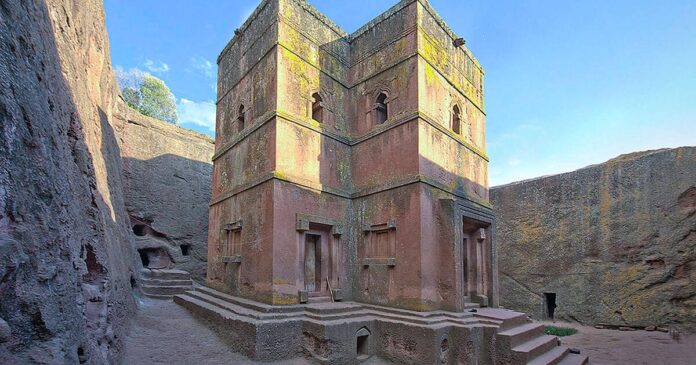In the highlands of northern Ethiopia, a small town named Lalibela holds one of Africa’s most remarkable religious and architectural wonders—the Rock-Hewn Churches of Lalibela. Carved directly into the red volcanic rock of the region, these 11 medieval churches are not only a UNESCO World Heritage Site but also a testament to centuries-old Ethiopian Christianity, craftsmanship, and devotion.
A Church Built from the Top Down
What makes the Lalibela churches especially unique is how they were constructed. Instead of being built up from the ground like most buildings, these structures were excavated downward into the rock.
Builders began by chiseling out large trenches to isolate blocks of stone, then meticulously carved the interior details—walls, columns, altars, windows, and doorways—from that solid mass. This technique is rare and incredibly demanding, even with modern tools, making their existence even more impressive considering they were built around the 12th and 13th centuries.
Who Built Them and Why?
The churches are named after King Lalibela of the Zagwe dynasty, who is said to have commissioned their construction. According to local legend, King Lalibela received divine instruction to build a “New Jerusalem” after Muslim conquests had made pilgrimages to the original Jerusalem more difficult. The churches are still active places of worship today and continue to draw pilgrims from across Ethiopia and beyond.
Layout and Symbolism
The churches are grouped into two main clusters—northern and southern—linked by narrow passageways, tunnels, and trenches. Each cluster is believed to symbolize different aspects of Christianity. For example:
- Biete Medhane Alem (House of the Saviour of the World) is the largest and thought to represent earthly Jerusalem.
- Biete Giyorgis (House of Saint George), possibly the most famous and well-preserved, is carved in the shape of a cross and stands alone, representing heavenly Jerusalem.
The layout is said to mirror both spiritual symbolism and practical monastic life. The complex includes baptismal pools, caves for ascetics, and even symbolic representations of biblical sites like the Jordan River.
A Blend of Cultures and Styles
Though the churches are distinctly Ethiopian in style and purpose, there are subtle influences from earlier Christian architecture in the Middle East and the Mediterranean. You can see elements like arched windows, carved domes, and basilica-style layouts. However, what sets them apart is their integration into the landscape—not just on top of it but within it.
Preserving a Living Heritage
Unlike many ancient sites that function solely as tourist attractions, the Lalibela churches are still used by Ethiopian Orthodox Christians. Religious festivals like Genna (Ethiopian Christmas) and Timket (Epiphany) draw thousands of faithful worshippers, many of whom walk for days to attend. This continuity of faith adds another layer to the churches’ importance—they’re not just relics; they’re part of a living tradition.

